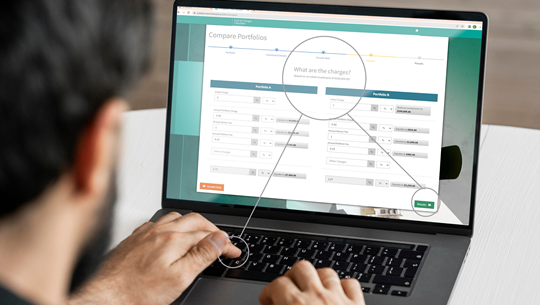We spoke to Mikkel to get all the necessary information on the DCPT - from what it entails to how fund groups are going about populating the template.
Let’s start with the obvious question – what is DCPT and when it is needed?
Since 2015, the IGCs – Independent Governance Committees – of defined contribution workplace pension schemes have been required to report annually to scheme members on things such as the costs charged by fund providers and the degree to which members receive value for money from the pension scheme.
As of this year, transaction costs need to be included in that disclosure and there are two types of transaction costs – those within the funds used by the scheme and those incurred by the pension scheme when buying and selling units in funds.
The method for calculating transaction costs differs slightly to that used in PRIIPs and MiFID II. The costs of the default fund within a DC workplace scheme are capped, but what is included in that cap is not exactly the same as with PRIIPs and MiFID II; any costs incurred by the fund for borrowing or lending are outside the cap and are treated as transaction costs. So, you can’t simply use the transaction costs shown on a PRIIPs KID or in a MiFID II disclosure, which is why the DCPT was created by the IA and ABI to capture the necessary transaction costs of funds and pass them on to the IGCs.
DCPT doesn’t stand alone, because it doesn’t do anything about the transaction costs incurred by pension schemes when dealing in funds, so it is essentially two templates. The FCA has set out in COBS 19.8 – the FCA handbook on Disclosure of transaction costs and administration charges in connection with workplace pension schemes - how to calculate the “arrival price” for funds, as they are not priced constantly; the arrival price calculation for equities clearly wouldn’t work. Hence, the Fair Value Mid-Price Template – FVPT – has been produced to give pension scheme providers the arrival price of the funds they invest in.
For dual-priced funds, the arrival price is the mid-market price between creation and cancellation; for single-priced funds with a dilution levy, the quoted price is, by definition, the fair value mid-price; while for swinging single-priced funds, the fair value price is before any swing, so it may or may not be the quoted price.
Why can’t the two templates be combined into one?
Both templates are different in how they are populated. The data on the DCPT is static or semi-static, as transaction costs may only be updated once a year or if not, quarterly. Fund groups don’t know when a pension scheme may deal in its funds, so they need to provide the fair value mid-price for every price point.
Also, DC workplace pension schemes include group SIPPs. A fund group may realise the data is needed, only when the IGC asks for it.
What are fund groups doing about populating the DCPT?
Groups with funds used within insured schemes have generally been working with the insurance companies to get the data to them in time for the first annual report.
Many groups not linked to insured schemes are also going on the front foot, rather than waiting until the pensions ask for the data. We hear that groups have been populating the data to the end of the second quarter, which seems to be taking around three months. Future quarterly updates should be ready more quickly.
One point to remember is that fund groups should supply generic data, not prepared specifically for each pension scheme. Each scheme can assume that the costs apply evenly throughout the year. If the template is updated quarterly, the latest values are going to be pretty accurate for any scheme using the latest data for its annual report.
For the FVPT, the consensus is for the template to be updated once a month with the previous month’s prices, based on the fund’s pricing frequency. This keeps it current without requiring a daily update.
Aren’t there other pension disclosure templates out there, so is the DCPT really necessary?
Last year, the IA worked with the Local Government Pension Scheme (LGPS) on a template for their disclosure and the FCA later set up its Institutional Disclosure Working Group (IDWG) to come up with the definitive institutional disclosure regime. But the LGPS template did not have any fund or share class information on it, which is a must-have for DC workplace pension scheme disclosure.
And, as the DC pension scheme disclosure regime came in at the start of 2018, we couldn’t wait until an institutional template that works across all situations has been agreed before proceeding with the DCPT.
What about the future?
In February this year, the FCA published its discussion paper on “Effective competition in non-workplace pensions”, i.e. personal pensions, SIPPs and so on. We’re waiting for the FCA’s output from the discussion paper, but the FCA has already said that its main weapon in the competition war is full transparency. So, it would be fair to expect that the FCA will want all costs, including transaction costs, to be disclosed for them as well.
Any fund group not already completing the DCPT will almost certainly need to populate it soon enough.
For further information, please contact us.


